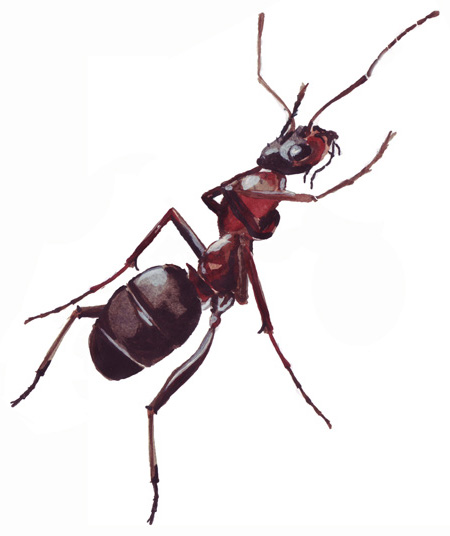
Natural History of Scilly



Ant Forensics
Colonies of Red Barbed Ant Formica rufibarbis thrive on Chapel Down, St Martins and are known locally as the 'St Martins Ant'. Although Red Barbed Ants are found over much of Europe and almost as far north as the arctic circle, they are extremely rare in Britain. The St Martin’s Ant’s nearest and only neighbours in Britain are a tiny population in Cobham, Surrey. So, when did the St Martins Ant arrive in Scilly and how special is it?
Some think that Formica rufibarbis was accidentally introduced to Scilly from Surrey (route A on the map), but is that really how it got here?
Where was the St Martins Ant during the Ice Age? Did it retreat to southern Europe to escape the cold, returning 15,000 years ago across the land bridge to Scilly (B), or did it survive in Scilly throughout the Ice Age (C), becoming cut off from other populations as the ice melted?
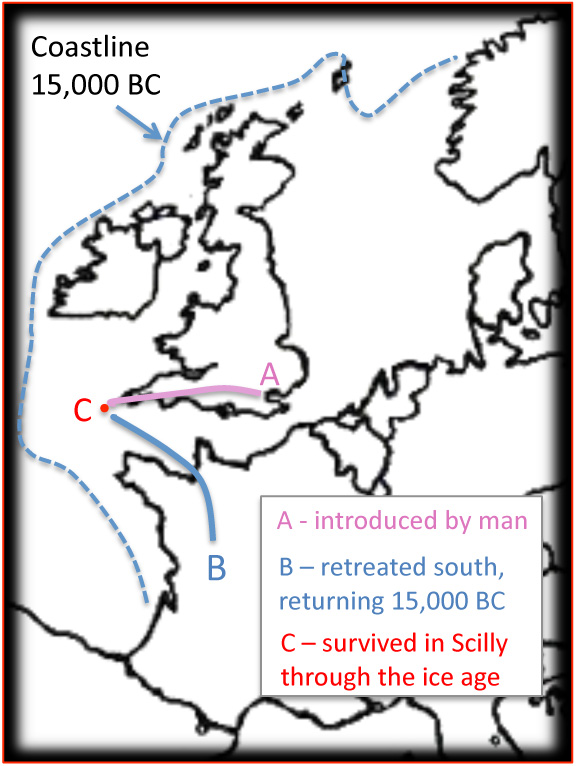
When DNA is copied, the linear sequence of its bases, A T C and G, is maintained by pairing bases –A with T and C with G.
Small changes to DNA sequences “mutations” occur naturally as copying errors or are induced by environmental mutagens such as uv light, or chemical agents. Most of these changes to the DNA sequence have no effect on survival.
Changes to the original sequence are perpetuated in new DNA strands through the base-pairing mechanism. Changes in the DNA sequence of eggs or sperm can be passed from parent to offspring. As each generation adds its own changes, the DNA sequence gives us a record of ancestry.
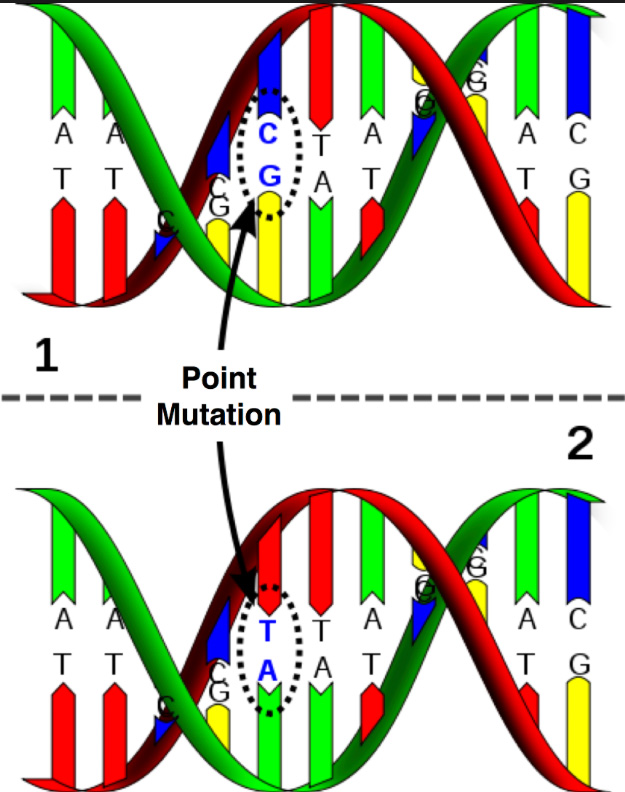
Mutations are random events, so different individuals have different mutations. When populations can interbreed, mutations get shared around.
When populations are isolated by seas or mountains their DNA sequences gradually become different. Mini tutorial >>
Mutations in mitochondrial DNA accumulate at a fixed rate- they provide a molecular clock to measure evolutionary time. We can use this clock to estimate how long the St Martins Ant has been isolated from mainland populations.
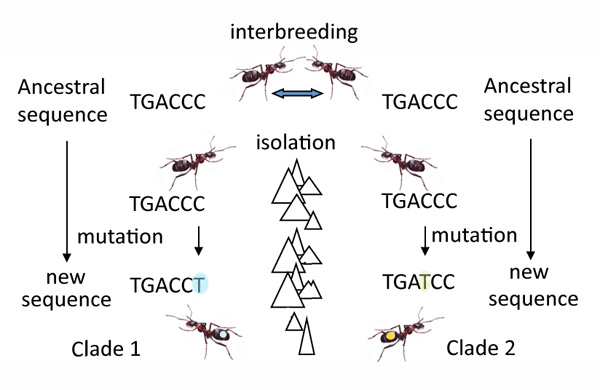
DNA from St Martins Ants and from Formica rufibarbis ants collected in Surrey, Bayern and Brittany was sequenced by the London Zoological Society as part of a lottery funded project (project report) and a short section of these sequences are shown aligned below (full sequences available at PubMed).

Using open source software (ClustalW2), the ant DNA samples (including those of the closely related species Formica candida and Formica cunicularia) were compared and a phylogenetic tree was constructed. This revealed that the cytochrome b DNA sequence of the St Martins Ants has many mutations not seen in the other samples and indicates that the St Martins Ant population became isolated before the others.

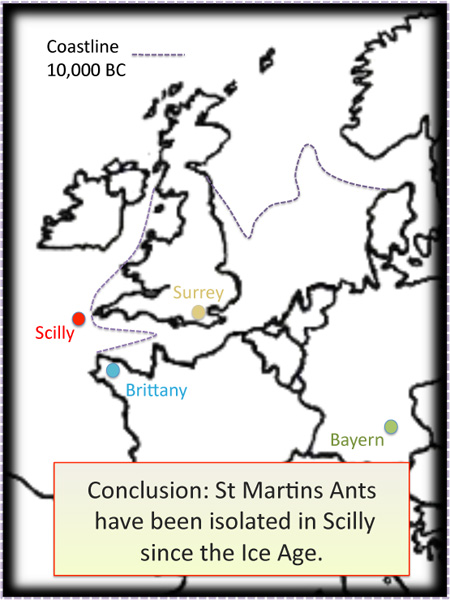
Interestingly, the Surrey ant DNA sequence resembles the French and German samples more closely than the Scilly sample. Clearly the St Martins Ant was not introduced here from Surrey (route A).
The St Martins Ant is not closely related to the Red Barbed Ants in Brittany either, so, unlike many other insects, it did not retreat south to escape the cold of the Ice Age (route B).
Instead, the DNA evidence suggests that the St Martins Ant survived in Scilly during the Ice Age, and that the Red Barbed Ants in Brittany, Bayern and Surrey continued to interbreed after Scilly became isolated. So the St Martins Ant is even more extraordinary than previously thought!
Combining geological evidence of past sea levels, knowledge of the ant’s ecology and the DNA sequence data, we can infer that the St Martins Ant survived in Scilly through the ice age and has probably been genetically separate from the Surrey colonies for more than 15,000 years.
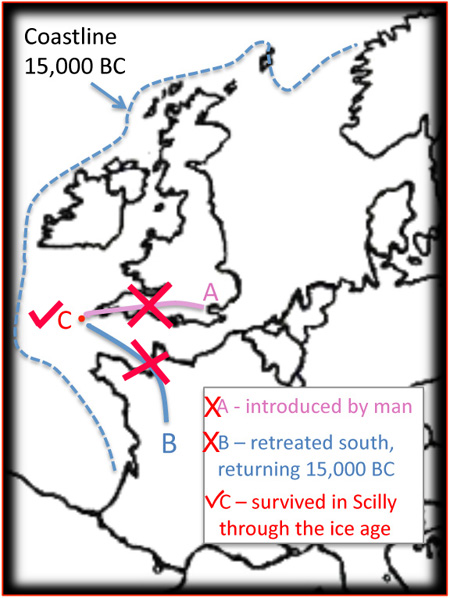
Cool DNA Learning Centre with animations, interviews, tools etc "Preparing students and families for living in the DNA age"
How to Make a Cladogram to sort animals according to their characteristics and help understand their evolutionary relationships
Copyright © 2016 Creative Commons